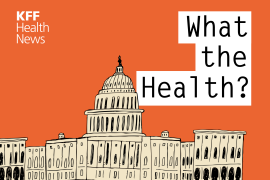Study Finds Improvements in Access to Health Care for Minority Children
Health care disparities remain between white and minority children, but the gaps narrowed over the past 20 years, according to a report sponsored by the Foundation for Child Development and released on Wednesday by the New America Foundation, CQ HealthBeat reports (Grimaldi, CQ HealthBeat, 1/29). For the study, researchers looked at data records of minority and white children from 1985 to 2004 that were based on 28 measures, including health, income and education. The measures then were combined to determine the child well-being index (Koch, USA Today, 1/28).
According to the report, the number of white, black and Hispanic children with health insurance has increased since 1985. Coverage for white children was at its lowest point in 1996, and coverage for black and Hispanic children was at its lowest point in 1998, the study found. Donald Hernandez, the report's co-author and sociology department chair at the University at Albany-State University of New York, attributed the growth in coverage to SCHIP. He said, "There are these increases over the next seven, eight years, which seems quite likely to be due to SCHIP because there was a big expansion, a big increase in access to health insurance for kids."
The report found that the disparity in health coverage for Hispanic children decreased from 18% to 12% over the study period and from 6% to 5% for black children. The study also found that black children in 2004 faced a 49% disadvantage to white children in the overall health domain, down from 56% in 1985. In addition, the study found that for blacks, child mortality rates improved by 40%, infant mortality rates improved by 20%, low birthweight improved by 10% and subjective health status improved by 20%. The study found Hispanic children faced a 1% disadvantage to whites in 2004, compared with 14% in 1985.
Hernandez said further developments in SCHIP legislation could lead to more improvements in the coverage rates, adding that the study suggests "additional efforts to fund the program would be successful" (CQ HealthBeat, 1/29).
The study is available online.






